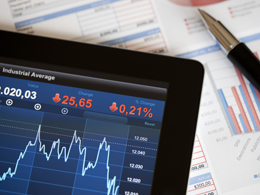 Yesterday wasn’t a good day for the stock market—anywhere. When I wrote yesterday’s post, the U.S. markets were only off by a bit. But the drop later in the day looked like it might be a bad sign; at a little over 2 percent, it was the largest one-day dip in some time.
Yesterday wasn’t a good day for the stock market—anywhere. When I wrote yesterday’s post, the U.S. markets were only off by a bit. But the drop later in the day looked like it might be a bad sign; at a little over 2 percent, it was the largest one-day dip in some time.
Scary stuff, and to make matters worse, the U.S. indices plummeted below a couple of key support lines, including the 100- and 150-day moving averages. We’re getting very close to the 200-day moving average, my personal trip wire for concern.
It wasn’t just Greece, although that situation alone is troubling. We also had Puerto Rico, announcing its debt is not sustainable, and the Chinese stock market moving into bear market territory. There was a lot to worry about, all coming at once.
Does the market reaction make sense?
When you think about it, though, the reaction in U.S. markets may be perfectly rational. Consider it this way: Stocks should be priced based on their earnings. If expected earnings decline and valuations remain constant, stock prices should decline as well. So far, so fundamental.
Using the S&P 500 as a proxy for the stock market, let's see how that 2-percent drop might, in fact, make sense.
- About 40 percent of S&P 500 revenue comes from outside the U.S.
- If we equate a 2-percent drop in the market to a 2-percent drop in earnings (simplistic but reasonable for this kind of top-level analysis), that would mean foreign revenue might be around 5 percent less than expected.
- Five percent of 40 percent is a 2-percent revenue decline, which brings us back to the 2-percent drop in the U.S. market. (Drops in individual foreign markets were generally larger, reflecting greater potential declines.)
We also need to consider that the market looks forward for earnings. That 5-percent difference is therefore not on current earnings but on expected earnings. If earnings were previously expected to grow 10 percent, for example, then even growth of 5 percent would represent a 5-percent difference from the previous expectation. This adjustment can still allow for continued growth.
I’m playing fast and loose with the numbers here, of course. But the point is that, as an initial reaction, repricing the market to reflect slower growth in the aftermath of the Greek default (not to mention the Chinese market action and Puerto Rico announcement) appears to be a rational response to changing circumstances.
Looks like a normal adjustment to me
Arguably, the downward revision should be larger, and we may yet see that. The fact that the adjustment seems rational, though, suggests that markets may well adjust upward if the damage proves less severe than expected.
In other words, what we’re seeing (at least so far) is a normal adjustment that reflects how the market should be acting. Amid all of the headlines, concern is reasonable, but as of now, there’s really nothing exceptional going on and no reason to worry more than usual.


 Print
Print


